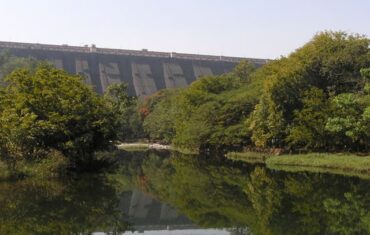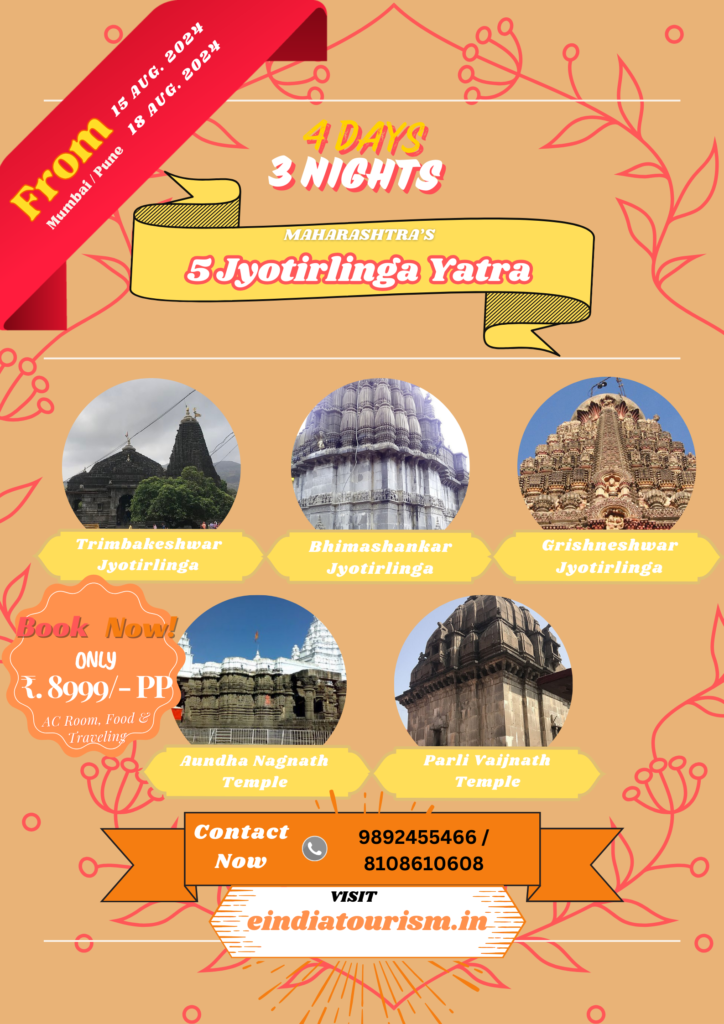Navghan Kuvo is a stepwell that is located in Uparkot Fort, Junagadh, Gujarat. The stepwell is named after the Chudasama king Ra Navaghana, who ruled over this region in the 11th century. The stepwell is believed to have been completed by his son Khengara. The stepwell is considered to be one of the oldest and most unusual stepwells in Gujarat, as it is partly carved out of soft rock and partly built up with stone. The stepwell has a spiral staircase that winds around the well shaft, which has square holes for ventilation and illumination. The stepwell was used to provide water and shelter to the fort during long sieges. Vsiit during One Day Junagadh sightseeing Trip By Private Cab
Location of Navghan Kuvo
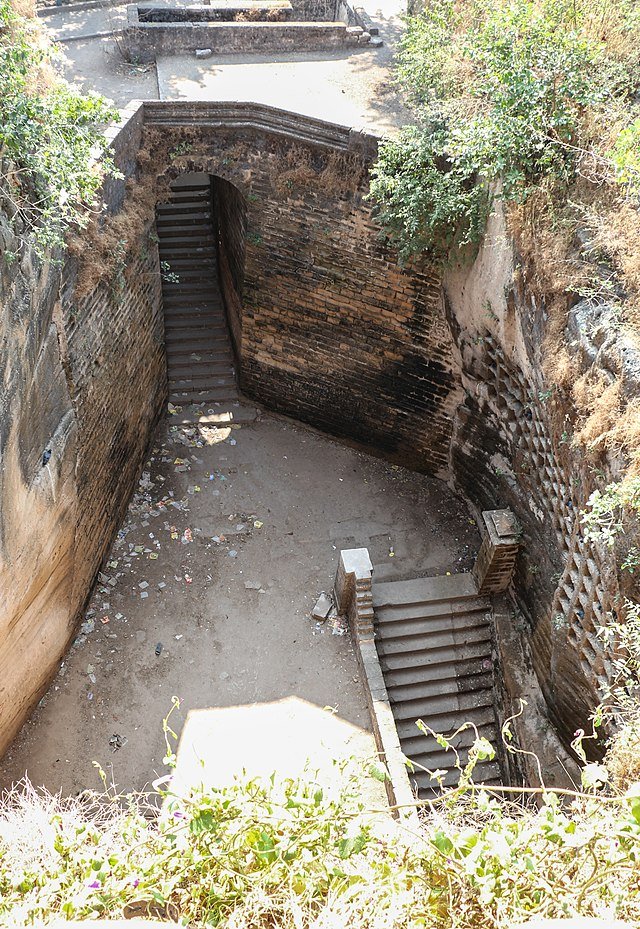
Navghan Kuvo is situated in Uparkot Fort, a historical fort that was built in 319 BCE by Chandragupta Maurya, the founder of the Mauryan Empire. The fort is located on a plateau in the eastern part of Junagadh city, at the foot of the Girnar hills. The fort covers an area of about 70 acres and is surrounded by a moat and high walls. The fort is about 2 kilometers (1.2 miles) from the city center of Junagadh, which is the headquarters of Junagadh district in the Saurashtra region of Gujarat.
Timing / Entry Fees Navghan Kuvo
The fort and the stepwell are open to the public every day from 9:00 am to 5:00 pm. The entry fee for Indian visitors is Rs. 10 per person, and for foreign visitors is Rs. 50 per person. There is no camera fee for still or video cameras. The visitors can also hire a guide for Rs. 100 to learn more about the history and architecture of the fort and the stepwell.
How to Reach Navghan Kuvo
The nearest airport to Junagadh is Rajkot Airport, which is about 103 kilometers (64 miles) away. There are regular flights from Mumbai, Delhi, Ahmedabad, and other major cities to Rajkot. From Rajkot, one can take a taxi or a bus to Junagadh, which takes about 2 to 3 hours.
The nearest railway station to Junagadh is Junagadh Junction, which is well connected to Ahmedabad, Rajkot, Veraval, Somnath, and other cities by trains. From the railway station, one can take an auto-rickshaw or a taxi to Uparkot Fort, which takes about 10 minutes.
Junagadh is also accessible by road from Ahmedabad, Rajkot, Veraval, Somnath, and other cities by buses or cars. The distance from Ahmedabad to Junagadh is about 355 kilometers (221 miles), from Rajkot to Junagadh is about 100 kilometers (62 miles), and from Veraval to Junagadh is about 80 kilometers (50 miles).
Things to Do / Must See Navghan Kuvo
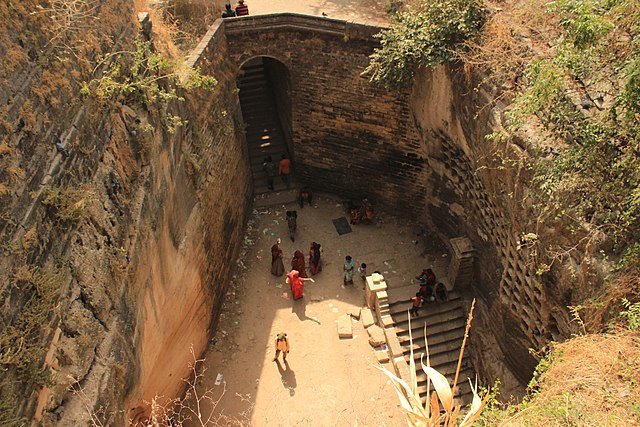
Navghan Kuvo is a unique and ancient attraction that attracts visitors with its history and architecture. Some of the things to do and see at the stepwell are:
- Explore the Stepwell: The stepwell has a flight of steps that leads to a forecourt, where the well shaft is located. The well shaft has a circular shape and is partly cut out of soft rock and partly built up with stone. The flight of steps then continues as a spiral staircase that winds around the well shaft, which has square holes for ventilation and illumination. The well is 52 meters (171 feet) deep and has a diameter of 4 meters (13 feet).
- Learn about the History: The stepwell is named after the Chudasama king Ra Navaghana, who ruled over this region in the 11th century. It is believed to have been completed by his son Khengara. The stepwell is considered to be one of the oldest and most unusual stepwells in Gujarat, as it is partly carved out of soft rock and partly built up with stone. The stepwell was used to provide water and shelter to the fort during long sieges.
- Enjoy the View: The stepwell offers a scenic view of the city and the hills from its forecourt and its minaret. The minaret was added later by Sultan Mahmud Begada, who conquered Junagadh in 1470. The minaret has a height of 18 meters (59 feet) and has nine stories.
Nearby Tourist Places of Navghan Kuvo
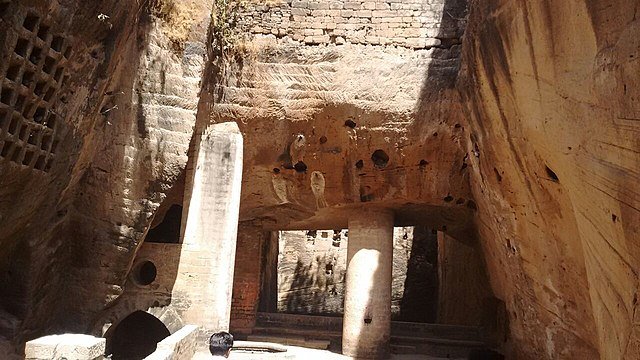
Uparkot Fort has many other tourist places to explore besides Navghan Kuvo. Some of the nearby tourist places are:
- Adi Kadi Vav: This is another stepwell that was built in the 15th century and named after two slave girls, Adi and Kadi, who used to fetch water from it or were sacrificed for it, according to different legends. The stepwell is 41 meters (135 feet) deep and has a circular shape.
- Ashoka’s Rock Edicts: This is a large boulder with fourteen edicts of Emperor Ashoka engraved on it in Brahmi script and Pali language. The edicts date back to 250 BCE and convey Ashoka’s message of peace, tolerance, compassion, and dharma (righteousness). This is one of the oldest inscriptions in India and a testimony to Ashoka’s influence on Gujarat.
- Rudradaman’s Sanskrit Inscription: This is another inscription on the same boulder as Ashoka’s edicts, but in Sanskrit language and Kharoshthi script. The inscription was added by Rudradaman I, a Saka (Scythian) king who ruled over Malwa and Gujarat in the 2nd century CE. The inscription records his victory over the Satavahanas and his restoration of a dam on the Sudarshana Lake near Girnar.
- Buddhist Caves: These are a group of rock-cut caves that date from before 500 CE and are among the earliest examples of Buddhist architecture in India. The caves have stone carvings and floral motifs that depict scenes from the life of Buddha and his teachings. The caves also have chaityas (prayer halls) and viharas (monasteries) where monks used to live and meditate.
- Babupyana Caves: These are another group of rock-cut caves that date from the 1st century CE and are attributed to Bava Pyara, a Jain monk who attained nirvana here. The caves have sculptures and paintings that depict Jain Tirthankaras (spiritual teachers) and their stories. The caves also have a water tank that is said to have healing properties.
- Jama Masjid: This is a mosque that was built in the 15th century by Sultan Mahmud Begada, who conquered Junagadh in 1470. The mosque has a large courtyard and a prayer hall with 140 pillars and nine domes. The mosque also has a minaret that offers a view of the city and the hills.
- Darbar Hall Museum: This is a museum that was established in 1977 and is located in the former durbar hall (royal court) of the Nawabs of Junagadh. The museum displays the royal memorabilia, weapons, paintings, manuscripts, and other artifacts that belong to the Nawabs and their families. The museum also has a collection of silver chains, thrones, palanquins, and howdahs (elephant seats).
Significance of Navghan Kuvo

Navghan Kuvo is a significant place for history, culture, and tourism in Gujarat. The stepwell showcases the legacy of the Chudasama dynasty that ruled over this region in the 11th century. The stepwell also preserves an ancient water management system that reflects the art, architecture, and engineering skills of the people of Gujarat. The stepwell also offers a glimpse into the life and times of the fort during long sieges.
FAQ’s
Q: What are the timings and entry fees of Uparkot Fort and Navghan Kuvo?
A: The fort and the stepwell are open from 9:00 am to 5:00 pm every day. The entry fee for Indian visitors is Rs. 10 per person, and for foreign visitors is Rs. 50 per person.
Q: How can I reach Uparkot Fort and Navghan Kuvo from Junagadh city?
A: You can reach Uparkot Fort and Navghan Kuvo from Junagadh city by auto-rickshaw or taxi, which takes about 10 minutes.
Q: What are the other attractions near Uparkot Fort and Navghan Kuvo?
A: There are many other attractions near Uparkot Fort and Navghan Kuvo, such as Adi Kadi Vav, Ashoka’s Rock Edicts, Rudradaman’s Sanskrit Inscription, Buddhist Caves, Babupyana Caves, Jama Masjid, and Darbar Hall Museum.
Q: How deep is Navghan Kuvo?
A: Navghan Kuvo is 52 meters (171 feet) deep and has a diameter of 4 meters (13 feet).
Q: Why is Navghan Kuvo named after a Chudasama king?
A: Navghan Kuvo is named after the Chudasama king Ra Navaghana, who ruled over this region in the 11th century. It is believed to have been completed by his son Khengara.
Conclusion
Navghan Kuvo is a unique and ancient stepwell that is located in Uparkot Fort, Junagadh. The stepwell is named after the Chudasama king Ra Navaghana, who ruled over this region in the 11th century. The stepwell is considered to be one of the oldest and most unusual stepwells in Gujarat, as it is partly carved out of soft rock and partly built up with stone.
The stepwell has a spiral staircase that winds around the well shaft, which has square holes for ventilation and illumination. The stepwell was used to provide water and shelter to the fort during long sieges. If you are planning to visit Junagadh, don’t miss the opportunity to visit Navghan Kuvo and experience its history and architecture. Book your ticket now and enjoy a memorable trip to Navghan Kuvo








